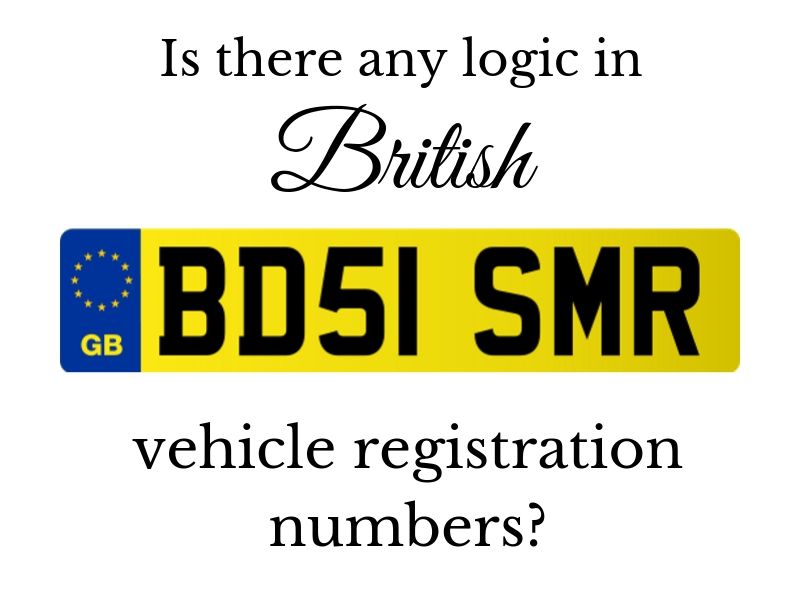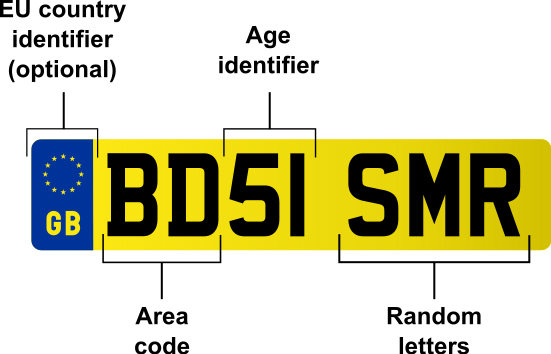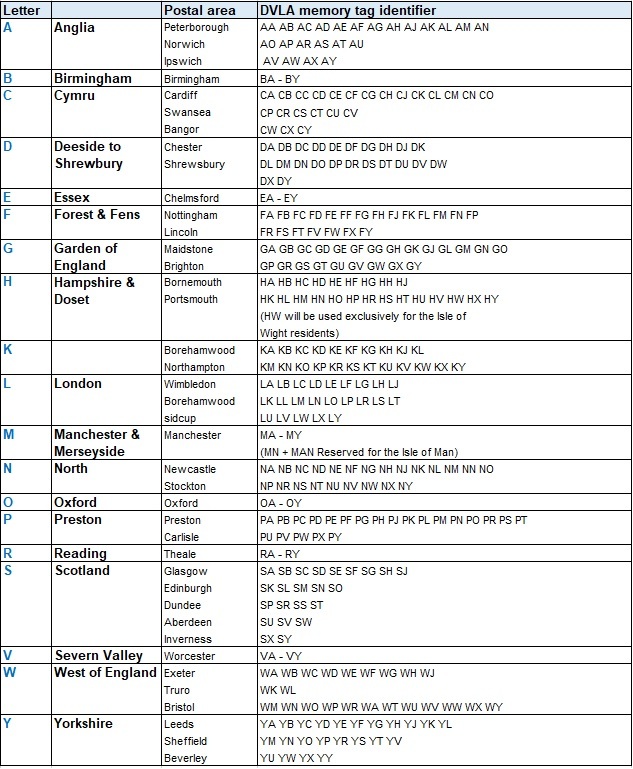I threw a picnic in our garden the other day. We were busy with all…
Is there any logic in British vehicle registration numbers?
The British are different in many ways, why would the vehicle registration number be different? I am sure many of us have asked the question:

Well, in fact there is just like British postcodes. The current British vehicle registration numbers have been in place since 2001 and are arranged in the following format: two letters, followed by two numbers followed by three letters.

The first two letters
The first two letters are the so called memory tags which identify the location of the first registration. These were determined by the DVLA. Although the DVLA closed their offices in 2013 and centralised the registration and they are done online with car dealerships, the traditional area codes are still in use. Below chart shows all the area codes. Easy-peasy, isn’t it? So if you buy a car in Scotland, the car’s registration number will start with an S, if you buy one in Birmingham, it will start with B.
Exceptions:
There was no DVLA office in an area starting with K, therefore no K used in area codes. I, J, Q and Z are never used in memory tags.
The letter T was additionally used for some registrations in Scotland, for example in the case of SN07 the S was replaced with T (TN01) as the SN07 resembled the word “snot”.
I, J, Q and Z are never used in memory tags.

The two numbers
After the area code there are two numbers to follow which are the age identifiers. This number shows in which six months the vehicle was registered. The logic is simpler than you would think: numbers change in March and September. The age identifier of a vehicle registered between March and September will get the year’s number e.g. March 2019 equals 19, April 2001 equals 01.
Vehicles registered between September and February are a bit more complicated, but do not worry, it is easy to follow. The logic also takes the year into consideration but it also adds 50 to it. So a car registered in October 2019 will be 19+50=69, a car registered in December 2001 will be 01+50=51.
The last three letters
The last three letters are randomly generated but what can happen is that dealerships are allocated a batch of registration numbers, so a dealer would have a run of consecutive numbers.
Letters I and Q are never used because they could be confused with 1 and 0 or O. Z is only used in the random letter combination, never in an area code (I and Z were used in Ireland in previous systems.). Being a proper British office, the DVLA take extra care to avoid combinations that could appear offensive or be a swearword even in another language. Therefore you would never find a COD, a BUM, a DOG or SEX on the road. 🙂
If you wish to keep your registration plate for your next vehicle you can, however it costs extra money.

Why do the British make it more complicated?
Actually, they don’t make it more complicated, the above system has advantages.
- When you buy a second-hand vehicle you can easily identify its age. The only complication can be if the owner kept his previous car’s registration number.
- In an accident it is highly unlikely that we can recall a full registration number of a vehicle, but we are likely to make note of the first two, the area codes which can help the investigation.
- This system is able to generate registration numbers until 2051. What happens after that… No idea.
Why are plates white in the front and yellow in the back?
Some believe yellow plates mean nothing. The general conception is that white and yellow backgrounds are the clearest distinguishable options for dark letters and you may as well match the number plate with the lights where it can be; putting the yellow to the rear by default. Another theory suggests it is illegal to show a white light to the rear at night, and that the law includes reflectors in its definition of what constitutes a light.
Other interesting facts:
- This system is valid in Great Britain and excludes Northern Ireland where there is a completely different system in place. Therefore, the country code of the British cars is not UK but GB, whereas Northern Ireland’s is NIL (however, there is a UK version available as well). Alternatively, residents of Great Britain may chose to display their residing country’s code: ENG or England; CMY, Cymru or Wales; SCO or Scotland.
- The Isle of Wight use the above mentioned system, but the Isle of Man, Jersey and Guernsey have their own registration number system. There are only a few cars on the Isle of Scilly so they may carry their old area code SCY.
- Limousins used on official events and formal occasions by the sovereign are the only vehicles in Britain not required to carry registration numbers. The Queen had five Rolls-Royces and a Bentley that carried no registration plates, vehicles used by the members of the royal family carry registration marks in the normal way.
- Vehicles of the armed forces use their own special registration system. Plates on military vehicles are painted black and fonts are displayed in silver.




theory suggests it is illegal to show a white light to the rear at night, and that the law includes reflectors in its definition of what constitutes a light.
this can’t be true as the reversing light is white also the light above the number plate is also white